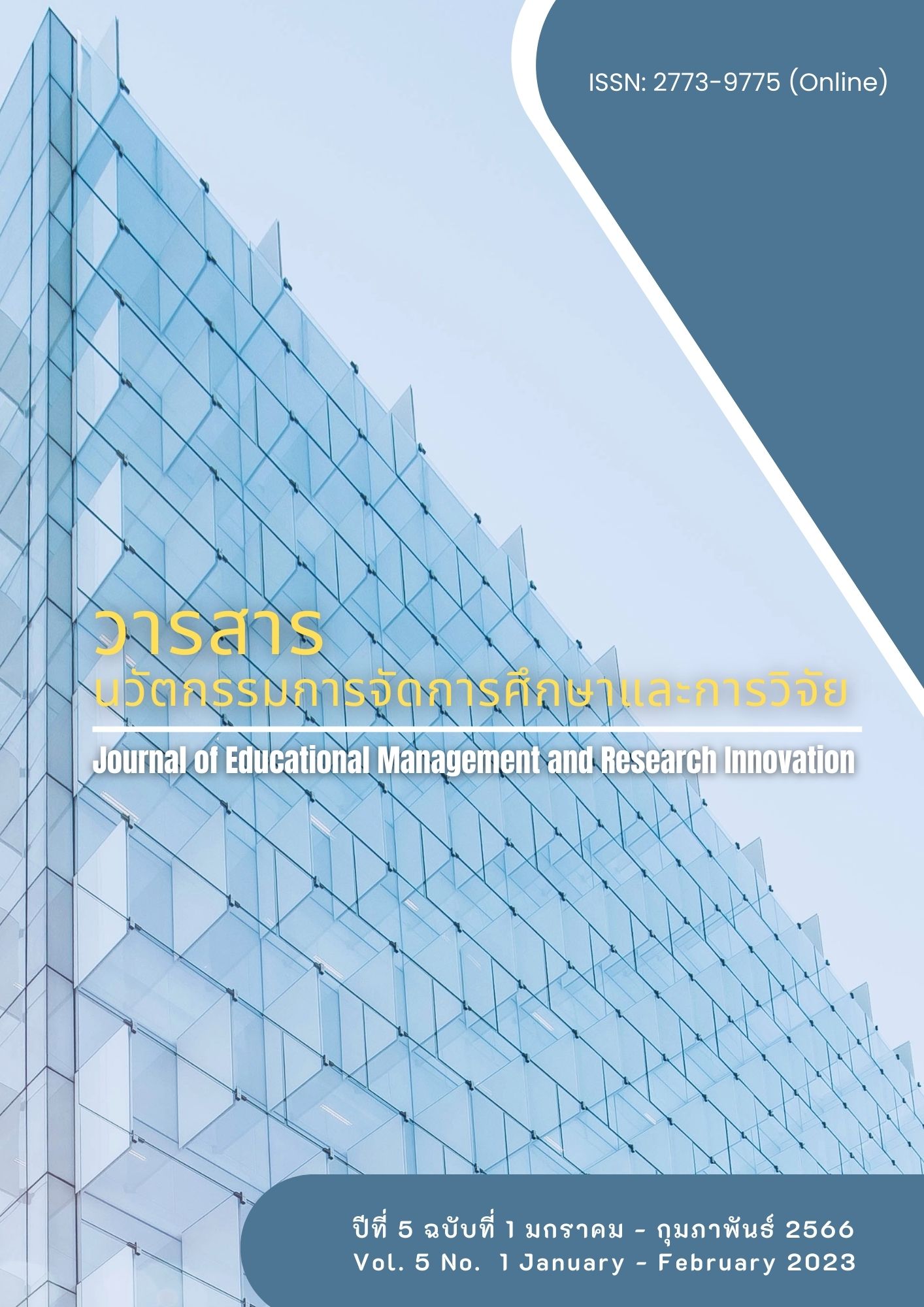Social Development and Human Security Volunteer and The Promotion of a Peaceful Society
Main Article Content
Abstract
Social Development and Human Security Volunteers (SDHSV) are volunteers who work in a variety of communities and villages to participate in social development and human security due to development missions. social and human security There is a wide scope for all populations. There are many types of volunteers available in local communities today. and perform various tasks such as public health volunteers, anti-drug volunteers, probation volunteers, etc., all of which these volunteers work in relation to social development and human security. Understand the importance of social development and human security, learn about the roles and duties to take part in social development work in their own locality and be a volunteer for social development and security. Humans in their villages and communities will create a working network at the local level that will be the basis for the important force in social development towards a peaceful, caring and sustainable society. This article presents Volunteer for social development and human security and the promotion of a peaceful society as a guideline for further study.
Article Details

This work is licensed under a Creative Commons Attribution-NonCommercial-NoDerivatives 4.0 International License.
References
กระทรวงการพัฒนาสังคมและความมั่นคงของมนุษย์. (2544). ปฏิญญาอาสาสมัครไทย. [ออนไลน์], แหล่งที่มา: https://www.m-society.go.th/article_attach/861/1490.doc, 2544, [3 ก.ค.2565].
จิรพันธ์ กัลลประวิทย์. (2558). เอกสารประกอบการฝึกอบรมแกนนำอาสาสมัครพัฒนาสังคมและความมั่นคงของมนุษย์. กรุงเทพฯ: สำนักปลัดกระทรวงการพัฒนาสังคมและความมั่นคงของมนุษย์.
ฉัตรวรัญ องคสิงห์. (2550). อาสาสมัครสาธารณสุข ศักยภาพและบทบาทในบริบทสังคมไทยที่เปลี่ยนแปลงไป. นนทบุรี: สถาบันวิจัยระบบสาธารณสุข.
ประวิตร พิสุทธิโสภณ. (2565). จิตอาสาคืออะไร. [ออนไลน์]. แหล่งที่มา: http://www.oknation.net. [13 พฤษภาคม 2565]
พระปรัชญ์กรณ์ วิยาสิงห์, พระอธิการวิชัย นาหนองบัว และ ธนรัฐ สะอาดเอี่ยม. (2565). พลังบวรกับการสร้างชุมชนให้เข้มแข็งผ่านมิติแกลมอของชาวกูย ในเขตตำบลศรีสุข อำเภอสำโรงทาบ จังหวัดสุรินทร์. วารสารนวัตกรรมการจัดการศึกษาและการวิจัย, 4(1), 39-48.
พระไพศาล วิสาโล. (2550). ศาสตร์และศิลป์แห่งการจัดการความดี: ศึกษากรณีมูลนิธิฉือจี้. วารสารศูนย์คุณธรรม, 3(2), 10-42.
พระมหาวีรธิษณ์ อินทะโพธิ์ และ ธานี สุวรรณประทีป. (2565). ความปรารถนาของมนุษย์: บทวิเคราะห์ในมิติพระพุทธศาสนา. วารสารนวัตกรรมการจัดการศึกษาและการวิจัย, 4(1), 29-38.
พระมหาศุภวัฒน์ บุญทอง, กฤติยา ถ้ำทอง และ ชำนาญ เกิดช่อ. (2565). การปรับสมดุลอินทรีย์ 5 ตามธาตุทั้ง 4 ในทางพระพุทธศาสนา. วารสารสหวิทยาการมนุษยศาสตร์และสังคมศาสตร์, 5(2), 760-775.
พิสิฐ โอ่งเจริญ. (2563). รูปแบบการเพิ่มประสิทธิผลในการพัฒนาศักยภาพอาสาสมัครพัฒนาสังคมและความมั่นคงของมนุษย์ (อพม.) เพื่อการพัฒนาชุมชน. วารสารวิชาการมหาวิทยาลัยนอร์ทกรุงเทพ, 9(1), 65-75.
เพชรภี ปิ่นแก้ว. (2554). จิตอาสา สุขสร้างง่ายๆ แค่ลงมือทำ. กรุงเทพฯ: Iam Bookazine.
นเพ็ญ พรินทรากูล. (2565). การแก้ไขปัญหาของชุมชนด้วยกระบวนการวิจัยท้องถิ่นในพื้นที่จังหวัดลำพูน. วารสารศิลปการจัดการ, 6(1), 374-387.
ศศิพัฒน์ ยอดเพชร. (2534). อาสาสมัครกับการปฏิบัติงานสังคมสงเคราะห์. กรุงเทพฯ: มหาวิทยาลัยธรรมศาสตร์.
สมพร เทพสิทธา. (2546). การเดินตามรอยพระยุคลบาท เศรษฐกิจพอเพียง ช่วยแก้ปัญหาความยากจนและการทุจริต. กรุงเทพฯ: สภายุวพุทธิกสมาคมแห่งชาติ.
สรณีย์ สายศร. (2558). การบูรณาการหลักการทางพระพุทธศาสนาในการทำงานจิตอาสา. วารสารพุทธศาสน์ศึกษา จุฬาลงกรณ์มหาวิทยาลัย, 22(2), 18-47.
สำนักงานพัฒนาสังคมและความมั่นคงของมนุษย์จังหวัดชัยนาท. (2565). ความรู้เกี่ยวกับ อพม.และผลการดำเนินงาน. สืบค้นเมือ 18 กรกฎาคม 2565 จาก, http://www.chainat.m-society.go.th/ volunteers.htm
Damnoen, P. S., Siri, P., Supattho, P. S., & Kaewwilai, K. (2021). The Development of Student Characteristics in According to the Nawaluk Framework of the Buddhist integration of Buddhapanya Sri Thawarawadee Buddhist College. Asia Pacific Journal of Religions and Cultures, 5(2), 126–135.
Susan J. Ellis & Katarines H. Noyes. (2003, August 26). Volunt/ar/eer/ism: What's the Difference?. Retrieved from http://www.energizeinc.com/art/1vol.html [3 ก.ค.2565].
Tan, C. C., & Damnoen, P. S. (2020). Buddhist Noble Eightfold Path Approach in the Study of Consumer and Organizational Behaviors. Journal of MCU Peace Studies, 8(1), 1-20.
UNV. (2004). Guidance Note on Volunteer Infrastructure. New York: McGraw Hill.


